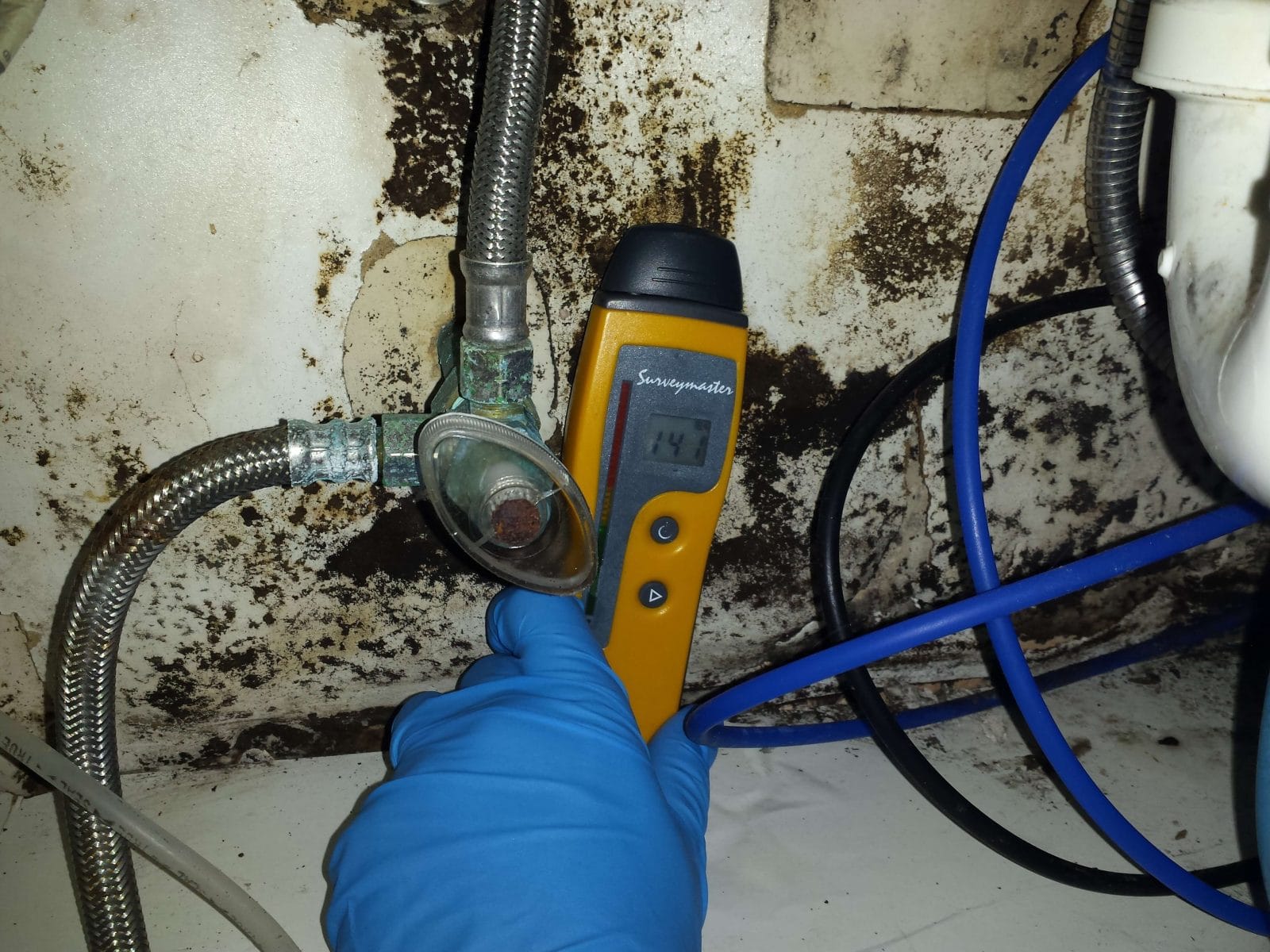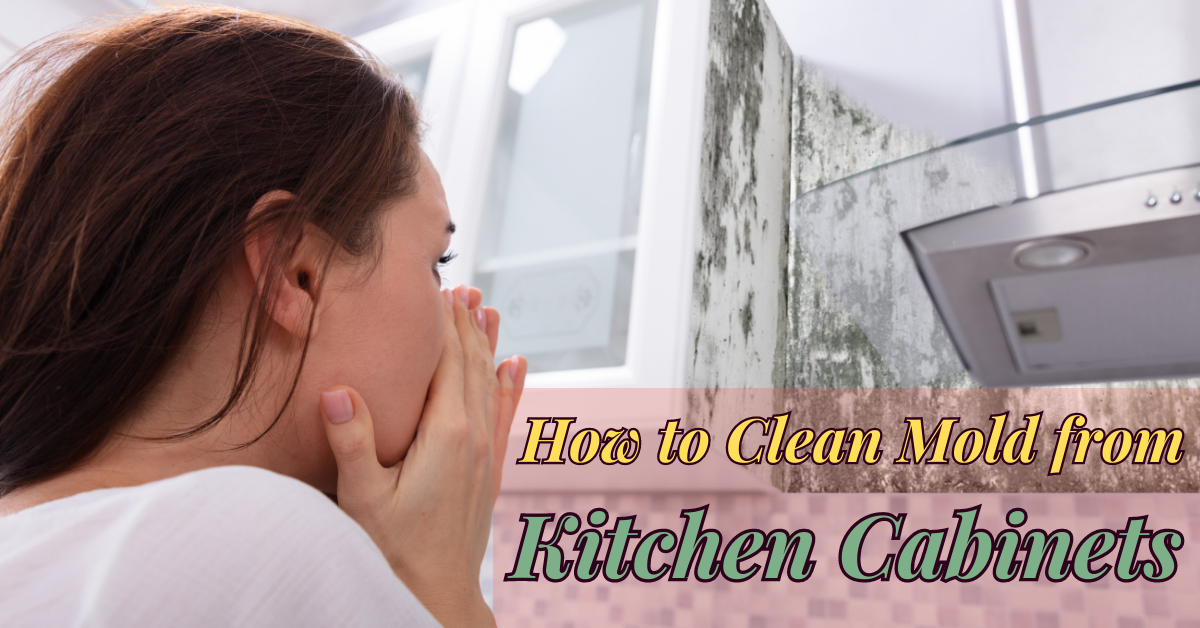Identifying Mold in Kitchen Cabinets: Mold In The Kitchen Cabinets

Mold in kitchen cabinets can be a health hazard and an eyesore. It’s important to be able to identify mold and address the issue promptly.
Types of Mold Commonly Found in Kitchen Cabinets
Mold thrives in damp, warm environments, making kitchen cabinets a prime location for growth. Here are some common types of mold you might encounter:
- Aspergillus: This common mold can cause respiratory problems and allergic reactions. It’s often black, green, or brown and can grow on various surfaces, including wood, drywall, and food.
- Penicillium: This mold is known for producing penicillin, an antibiotic. However, it can also cause respiratory issues and allergies. It typically appears green, blue, or white and is often found on damp surfaces like wood and paper.
- Cladosporium: This common mold is usually black or brown and is often found in damp areas, including kitchen cabinets. It can trigger allergies and respiratory problems.
Causes of Mold Growth in Kitchen Cabinets
Understanding the causes of mold growth is crucial for preventing it. Here are some common culprits:
- Leaks: Leaky pipes or faucets can create a damp environment, promoting mold growth. It’s essential to address leaks promptly.
- Condensation: Warm, moist air from cooking can condense on cold cabinet surfaces, creating a breeding ground for mold. Proper ventilation is key to preventing this.
- Spills: Spills that are not cleaned up promptly can lead to mold growth. It’s crucial to clean up spills immediately.
- Food Storage: Storing food improperly, such as leaving open containers or storing perishable items in cabinets, can attract moisture and create favorable conditions for mold growth.
Visual Identification of Mold in Kitchen Cabinets
Mold can manifest in various ways, making visual identification crucial. Here’s how to spot it:
- Color: Mold often appears as black, green, brown, white, or gray patches. However, some molds can have other colors, such as pink or orange.
- Texture: Mold can be fuzzy, powdery, or slimy. It can also be raised or flat.
- Smell: Mold often has a musty or earthy odor.
- Location: Mold often grows in damp areas, such as around leaky pipes, under sinks, or near windows.
Using Black Lights to Detect Hidden Mold
Black lights can help detect mold that may not be visible to the naked eye.
- How Black Lights Work: Black lights emit ultraviolet (UV) light, which causes mold spores to fluoresce, making them visible.
- Using a Black Light: Turn off all regular lights and shine the black light on the areas you suspect might have mold. Look for any areas that glow brightly, as these could indicate mold growth.
Dealing with Mold in Kitchen Cabinets

Mold in kitchen cabinets can be a frustrating and potentially harmful problem. It can affect the appearance of your kitchen, create an unpleasant odor, and even pose health risks, especially for people with allergies or respiratory issues. This section will guide you through the process of removing mold from your kitchen cabinets and provide tips for preventing future growth.
Cleaning Mold from Kitchen Cabinets
The first step in dealing with mold in kitchen cabinets is to clean the affected areas. This should be done carefully, using appropriate cleaning products and taking necessary safety precautions.
- Prepare the Area: Clear the cabinets of all items and food. Cover the floor and surrounding surfaces with plastic sheeting or drop cloths to prevent mold spores from spreading.
- Ventilate the Area: Open windows and doors to provide adequate ventilation. This will help to remove moisture and reduce the risk of inhaling mold spores.
- Wear Protective Gear: Wear a respirator mask, gloves, and eye protection to prevent exposure to mold spores.
- Clean with Mold-Killing Solution: A solution of bleach and water (1 part bleach to 10 parts water) is effective for killing mold. Alternatively, you can use a commercially available mold and mildew cleaner.
- Apply the Solution: Apply the solution to the affected areas using a sponge or cloth. Scrub gently to remove mold and spores. Avoid using harsh abrasives, as these can damage the cabinet surfaces.
- Rinse and Dry: Rinse the cabinets thoroughly with clean water and dry them completely. This will prevent the mold from returning.
- Repeat if Necessary: If the mold persists, repeat the cleaning process. Consider using a specialized mold removal product if necessary.
Preventing Mold Growth in Kitchen Cabinets, Mold in the kitchen cabinets
Mold thrives in damp environments. To prevent mold growth in your kitchen cabinets, it’s essential to control moisture and ensure proper ventilation.
- Proper Ventilation: Ensure that your kitchen has adequate ventilation. This can be achieved by using a range hood when cooking, opening windows, and installing exhaust fans.
- Control Moisture: Keep the humidity levels in your kitchen low. Use a dehumidifier if necessary. Wipe up spills and leaks immediately. Ensure that your kitchen sink and dishwasher are properly sealed and draining correctly.
- Storage Practices: Store food items in airtight containers. Avoid storing food items directly on shelves. Allow adequate space between items to promote air circulation.
- Regular Cleaning: Clean your kitchen cabinets regularly to remove dust, crumbs, and spills. This will help to prevent mold from growing.
Mold Removal Products
Several products are available for removing mold from kitchen cabinets. Here’s a comparison of their effectiveness:
- Bleach Solution: A bleach solution (1 part bleach to 10 parts water) is an effective and inexpensive option for killing mold. However, bleach can be harsh and can damage certain surfaces.
- Commercial Mold and Mildew Cleaners: These cleaners are specifically designed to remove mold and mildew. They often contain ingredients that are more effective than bleach at killing mold and are less likely to damage surfaces.
- Borax: Borax is a natural mineral that can be used to kill mold. It is less harsh than bleach and is generally safe for use around children and pets. However, borax can be irritating to the skin and eyes.
- Tea Tree Oil: Tea tree oil is a natural antifungal agent. It can be diluted with water and applied to mold-affected areas. However, tea tree oil can be irritating to the skin, so it’s essential to test it on a small area first.
Safety Precautions When Dealing with Mold
Mold can pose health risks, so it’s essential to take precautions when dealing with it.
- Wear Protective Gear: Always wear a respirator mask, gloves, and eye protection when cleaning mold. This will prevent you from inhaling mold spores and protect your skin and eyes from contact with cleaning solutions.
- Avoid Contact: Avoid touching mold with bare hands. Use a sponge or cloth to remove it.
- Ventilate the Area: Ensure that the area is well-ventilated. Open windows and doors to allow fresh air to circulate.
- Wash Hands: Wash your hands thoroughly with soap and water after cleaning mold.
- Dispose of Materials: Dispose of contaminated materials, such as cleaning cloths and sponges, in a sealed plastic bag.
- Professional Help: If you have a large mold infestation or if you are concerned about your health, it’s best to consult a professional mold remediation specialist.
Preventing Mold in Kitchen Cabinets

Mold growth in kitchen cabinets can be prevented by maintaining a clean and dry environment. This involves regular cleaning, proper storage practices, and addressing moisture sources.
Maintaining a Clean and Dry Environment
A clean and dry environment is crucial for preventing mold growth. This involves regular cleaning, proper storage practices, and addressing moisture sources.
- Regular Cleaning: Clean cabinets regularly with a mild soap and water solution. Pay special attention to areas prone to spills or moisture buildup, such as the bottom of cabinets or around the sink. Wipe down shelves and cabinet doors after each use to remove any food crumbs or spills.
- Proper Ventilation: Ensure good ventilation in the kitchen. Open windows or use exhaust fans while cooking to remove steam and moisture. Consider installing a dehumidifier in the kitchen if humidity levels are consistently high.
- Avoid Overcrowding: Don’t overcrowd cabinets with items. Leave some space between items to allow for air circulation and prevent moisture buildup.
Sealing Cracks and Gaps
Cracks and gaps in cabinets can allow moisture to seep in, creating a breeding ground for mold. Sealing these areas is essential to prevent moisture intrusion.
- Inspect Cabinets: Regularly inspect cabinets for cracks or gaps. Look for areas where water might be leaking in, such as around the sink or plumbing fixtures.
- Caulk and Seal: Use a high-quality silicone caulk to seal any cracks or gaps in cabinets. This will create a moisture-resistant barrier and prevent water from entering.
Proper Food Storage
Storing food items properly is essential to minimize moisture buildup in cabinets.
- Use Airtight Containers: Store food items in airtight containers to prevent moisture and odors from escaping. This helps to keep food fresh and prevent mold growth.
- Dry Food Thoroughly: Before storing dry food items like grains or pasta, ensure they are completely dry. Any remaining moisture can create a favorable environment for mold growth.
- Store Food Properly: Store food items according to their specific storage requirements. For example, fruits and vegetables should be stored in a cool, dry place, while meats and dairy products should be refrigerated.
Minimizing Humidity Levels
High humidity levels can contribute to mold growth in cabinets. Minimizing humidity in the kitchen is essential for preventing mold.
- Use Exhaust Fans: Use exhaust fans while cooking to remove steam and moisture from the air. This helps to reduce humidity levels and prevent condensation on cabinets.
- Open Windows: Open windows to allow fresh air to circulate and reduce humidity. This is especially important after cooking or showering.
- Dehumidifier: Consider using a dehumidifier in the kitchen if humidity levels are consistently high. This will help to remove excess moisture from the air and prevent mold growth.
Mold in the kitchen cabinets – Mold in kitchen cabinets is a right pain, especially if you’re trying to shift that student flat. It’s a good idea to sort out the issue before you even think about sprucing up the place, because if you’re thinking about giving those cabinets a fresh lick of paint, you’ll want to know how much to paint cabinets professionally, which depends on factors like the size of your kitchen and the condition of the cabinets.
But if you’ve got mold, you’ll need to deal with that first, so you’re not just covering up a problem.
Mold in kitchen cabinets is a right pain, innit? It can make the whole place feel grotty. But before you chuck out your whole kitchen, consider a bit of a makeover with kitchen cabinet touch up paint. A fresh lick of paint can do wonders for hiding those pesky mold spots, and give your cabinets a whole new lease of life.
Just make sure you tackle the mold properly first, or it’ll just come back to haunt you.
